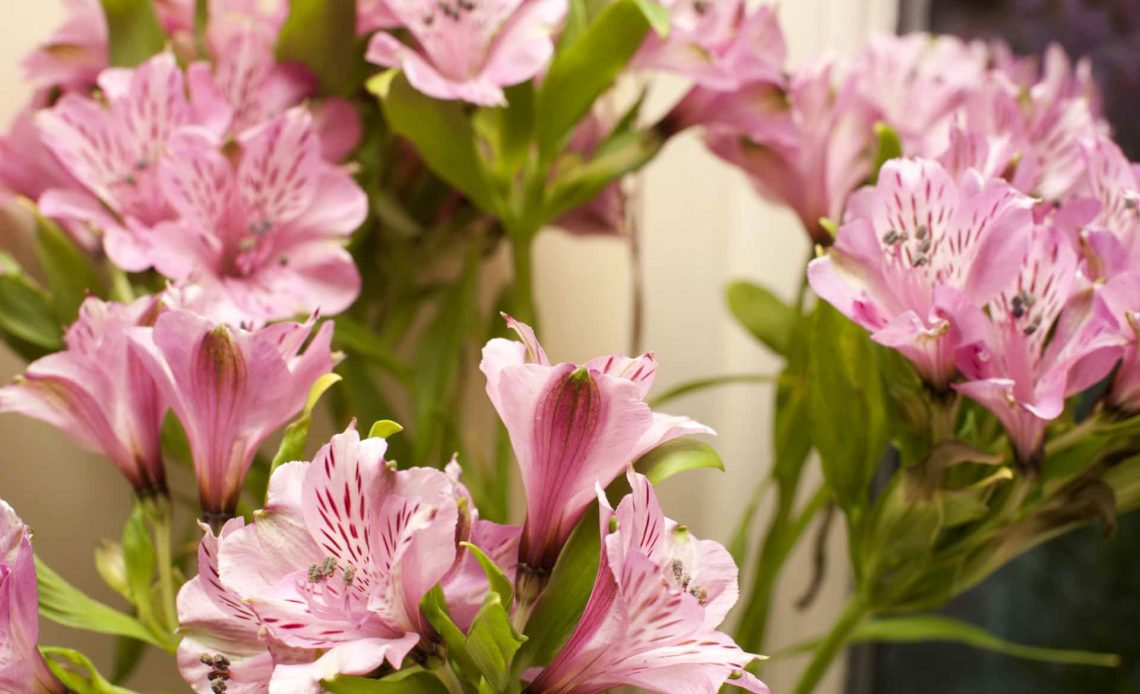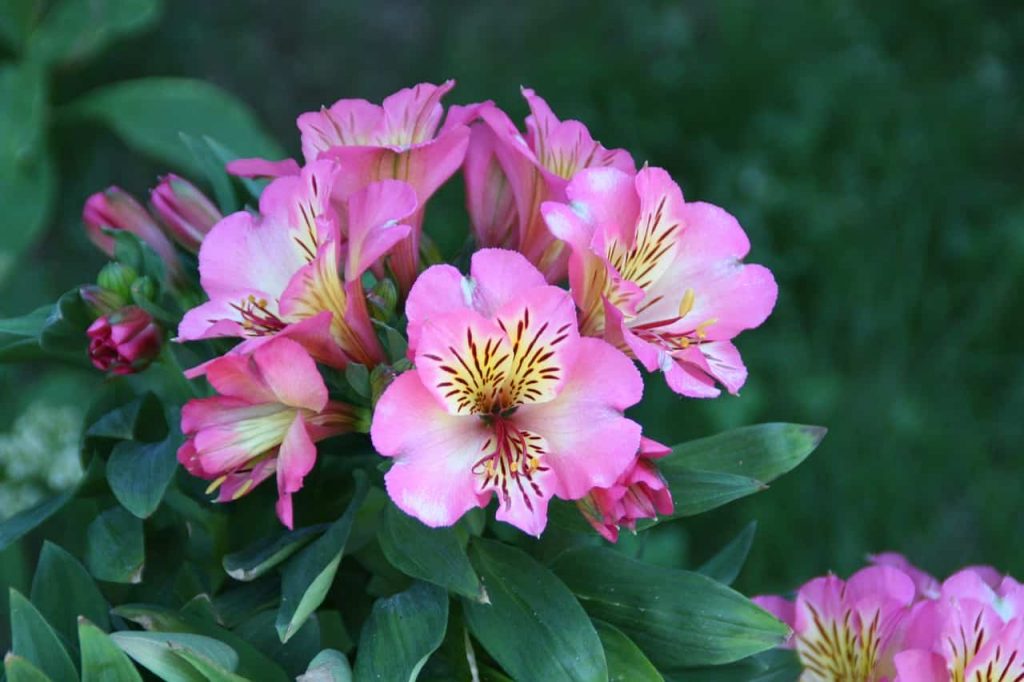
If you want to grow more Alstroemeria plants in your garden, you can easily propagate them from cuttings. This is a simple and inexpensive way to multiply your plants and enjoy more blooms. Here are the steps you need to follow to propagate Alstroemeria from cuttings:
Supplies for Growing Alstroemeria from Cuttings
Growing Alstroemeria, also known as Peruvian lily or lily of the Incas, from cuttings is a rewarding endeavor that can yield beautiful, blooming plants. This process, known as propagation, is a cost-effective way to multiply your Alstroemeria collection. The key to successful propagation lies in the right supplies and careful preparation. In this guide, we will discuss the essential supplies you need to propagate Alstroemeria from cuttings and provide step-by-step instructions to ensure your success.
Commercial potting mix: This is the best medium to use for rooting cuttings, as it provides good drainage and aeration. You can also make your own potting mix by combining equal parts of peat moss, perlite, and vermiculite.
Sharp knife: You will need a sharp and clean knife to cut the stems of the Alstroemeria plants. make sure you sterilize the knife before and after use to prevent any infection or disease. You can use rubbing alcohol or bleach to disinfect the knife.
Rooting hormone: This is a substance that stimulates the formation of roots on the cuttings. You can use a powder, gel, or liquid form of rooting hormone, depending on your preference. You can find rooting hormone at any garden center or online.
Plastic bag: You will need a clear plastic bag to cover the pot with the cuttings. However This will create a humid environment that will help the cuttings root faster. You can use any plastic bag that is large enough to fit over the pot without touching the cuttings.
Twist ties: You will need some twist ties to secure the plastic bag around the pot. Also You can use any kind of twist ties, such as those that come with bread bags or garbage bags.
Spray bottle: You will need a spray bottle to mist the cuttings regularly. This will keep them hydrated and prevent them from wilting and you can use any spray bottle that can produce a fine mist.
7 Step Guide for Growing Alstroemeria from Cuttings

Propagation of alstroemeria is a simple and rewarding process. To begin, make sure you have all the necessary supplies. Then, follow these steps to grow new plants from your existing ones:
1. Choose the Right Season
The best time to propagate Alstroemeria from cuttings is in spring or early summer, when the plants are actively growing. This will ensure that the cuttings have enough energy and vigor to root and grow. Avoid taking cuttings in winter, when the plants are dormant, or in late summer or fall, when the plants are preparing for dormancy.
2. Prepare the Site
Choose a spot where you want to grow your new Alstroemeria plants. So It should be a sunny or partially shaded location, with well-drained and fertile soil. Alstroemeria plants prefer a slightly acidic soil, with a pH of 5.5 to 6.5. You can test the pH of your soil with a kit or a meter, and adjust it if needed. You can also add some organic matter, such as compost or manure, to improve the soil quality and fertility.
Prepare a pot or a tray where you will plant the cuttings. It should have drainage holes at the bottom, and be large enough to accommodate several cuttings. Fill the pot or tray with the potting mix, and moisten it lightly. Make sure the potting mix is not too wet or too dry, as this can affect the rooting process.
3. Select a Healthy Stem
Choose a healthy and vigorous stem from the Alstroemeria plant you want to propagate. It should be about 6 to 8 inches long, and have at least three or four nodes. Also a node is the point where a leaf or a bud attaches to the stem. Avoid stems that are too young, too old, too thin, too thick, or diseased.
4. Cut the Stem
Using the sharp knife, cut the stem at a 45-degree angle, just below a node. This will expose more surface area for rooting, and prevent water from collecting on the cut end. Make sure you make a clean and smooth cut, without crushing or tearing the stem.
5. Remove the Lower Leaves
Remove the leaves from the lower half of the stem, leaving only one or two leaves at the top and this will reduce the water loss and the risk of fungal infection. You can also pinch off any flowers or buds that may be present on the stem, as they will divert the energy from rooting.
6. Plant the Cutting
Dip the cut end of the stem in the rooting hormone, and shake off any excess. This will help the cutting form roots faster and more successfully. Make a hole in the potting mix with your finger or a pencil, and insert the cutting into the hole. Make sure the node where you cut the stem is buried in the potting mix, as this is where the roots will emerge. Gently press the potting mix around the cutting to firm it up. You can plant several cuttings in the same pot or tray, as long as they are spaced about 2 to 3 inches apart.
7. Cover the Pot
Cover the pot or tray with the plastic bag, and secure it with the twist ties. This will create a mini greenhouse that will keep the cuttings moist and warm. Make sure the plastic bag does not touch the cuttings, as this can cause rotting or mold. You can use some sticks or wires to support the plastic bag and create some space.
Tips and Tricks for Growing Alstroemeria from Cuttings

Here are some tips and tricks to help you grow healthy and beautiful Alstroemeria plants from cuttings:
- Do place the pot or tray in a bright and warm location, but out of direct sunlight. The ideal temperature for rooting is between 65 and 75 degrees Fahrenheit.
- Do mist the cuttings daily with the spray bottle, or whenever the potting mix feels dry to the touch. However Do not overwater or underwater the cuttings, as this can cause rotting or wilting.
- Do check the cuttings regularly for signs of rooting, such as new growth or resistance when you tug gently on the stem. Also This can take anywhere from two to six weeks, depending on the species and the conditions.
- Do remove the plastic bag once the cuttings have rooted, and gradually expose them to the outdoor environment. You can do this by opening the bag for a few hours each day, and increasing the time until the cuttings are fully acclimated.
- Do transplant the cuttings to individual pots or to the garden once they have developed a strong root system and several new leaves. However You can do this in late summer or early fall, or in spring if you overwintered the cuttings indoors.
- Do use a balanced fertilizer, such as 10-10-10, to feed the cuttings once a month during the growing season. So This will promote healthy growth and flowering. Follow the instructions on the label for the dosage and frequency.
- Don’t expose the cuttings to frost, strong winds, or extreme temperatures. Also These can damage or kill the cuttings. If you live in a cold climate, you may need to bring the cuttings indoors or protect them with a cloche or a cold frame.
- Don’t let the cuttings get infested by pests or diseases. Some of the common problems that affect Alstroemeria plants are aphids, spider mites, slugs, snails, leaf spots, and root rot. You can prevent or treat these issues by keeping the cuttings clean, well-drained, and well-ventilated. You can also use organic or chemical methods to control the pests or diseases, if necessary.
- Don’t plant the cuttings too close together, as this can cause crowding and competition. Alstroemeria plants need enough space to grow and spread. The ideal spacing is about 12 to 18 inches apart, depending on the variety.

I’ve been wanting to propagate my alstroemeria for a while. This seems much easier than I thought! Have you found any specific rooting hormone works best for them?
Alstroemeria propagation can be easier than you think! While rooting hormone can increase success rates, it’s not always necessary. Focus on using a sterile cutting tool and maintaining proper moisture for optimal results in alstroemeria propagation.
As alstroemeria matures, it tends to create expansive colonies. Dividing the plants serves a dual purpose: it facilitates propagation and ensures that the colony remains manageable in size. During either early spring or early fall, carefully unearth the cluster of tuberous roots and divide it into separate sections.
That’s exactly right! Dividing alstroemeria tubers in early spring or early fall is a great way to propagate them and keep your colonies under control.